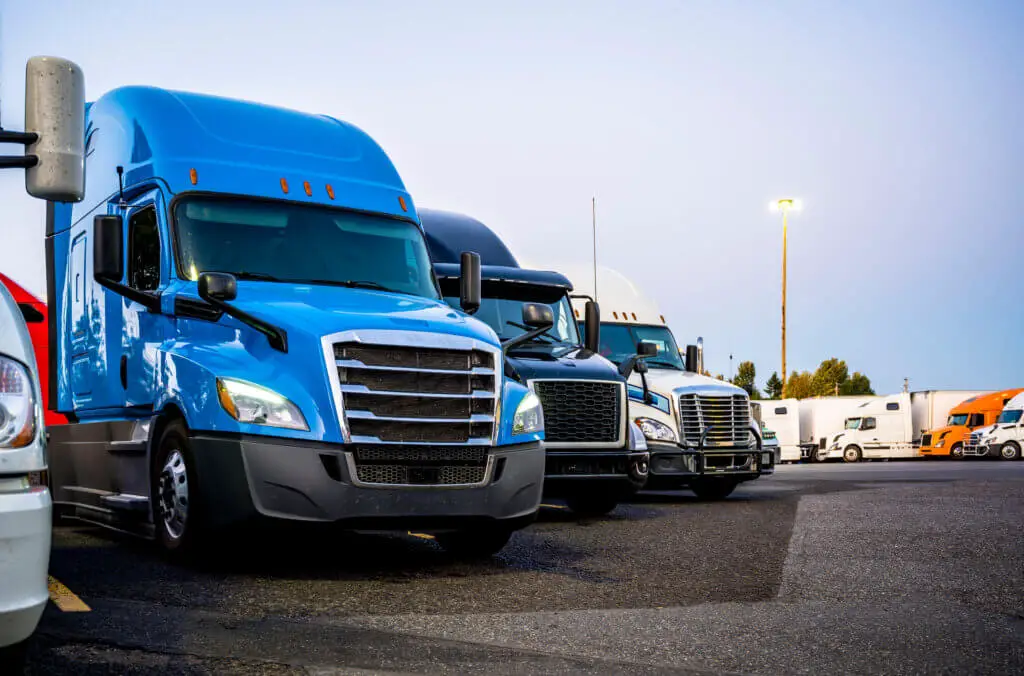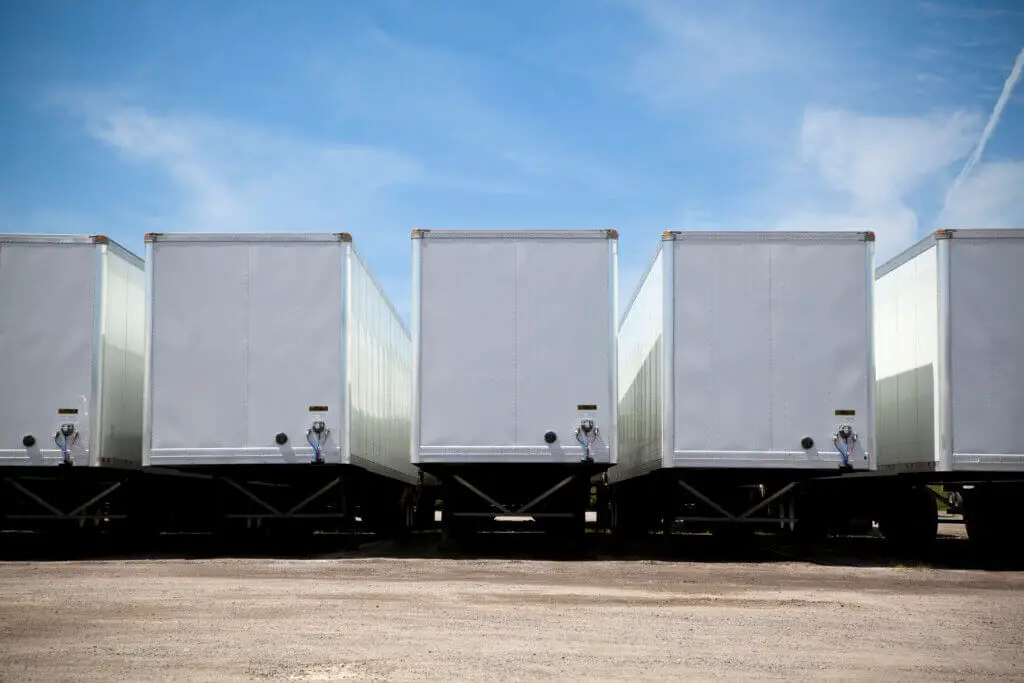A company’s success is determined by how well it works with a clear awareness of its market, internal capabilities, potential competitors, and a strategy for future relevance. That is why no company with success in mind goes to the market without a carefully written out and comprehensive business plan.
The logistics industry is no exception, as trucking companies must develop business plans to map out an effective growth strategy. And that is why we describe everything you need to know about how to write a trucking business plan that sets you on the path to success.
But first, let’s see what a trucking company’s business plan is.
What Is A Trucking Company’s Business Plan?

For owner-operator and fleet management businesses, a trucking company business plan is a roadmap for any company. It is a plan that lets them track their company’s goals, milestones, and finances.
However, these plans are not only relevant for startup businesses. Established businesses also modify their business plans to remain focused and reflect the businesses’ periodic growth.
When developing a trucking business plan, you must identify the distinguishing factors that make your business different from others. These distinguishing factors are what you should build your business plans around.
The Relevant Information You Need In Your Business Plan
A trucking company business plan involves extensive research on your business and its market. It is from this research you extract the relevant pieces of information you need in your business plan.
Answering the following questions is always a great place to start understanding business processes, such as cash flow, return on investment, profit, and other financial terms.
1. What are your assets?

This question forces you to identify your assets, their worth and the liabilities to your business. No business exists without accruing assets and liabilities. And answering this question helps you extract the best out of your assets while keeping your liabilities minimal.
Many online resources will teach you how to categorize equipment and properties into assets and liabilities. But a rule of thumb is that an asset is anything that brings cash flow into your company. A truck that you own, for instance, is an asset. Liabilities take money out of your pocket, and employee wages are a great example.
2. How do you manage finances?
By projecting revenue and expenses and understanding how you would manage costs, you can determine your profit margin.
3. What are the business’ operational costs?
Operational costs are indispensable in a business, and you should always monitor them. By adding up projected operational costs, including salaries, fuel and maintenance costs, you would know what rates to charge clients to attain profit.
4. What are your operational procedures?
Your operational procedure is basically logistics planning. It differs from one trucking business to another based on the type of cargo being transported. Also, any technology you intend to use to facilitate your operations can come here.
A major criterion determining a business’s operation level is its financing. Hence, answering these questions would be critical in developing a business plan that serves as an effective tool for attracting investors.
Having relevant industry and commercial knowledge can help you complete the technical components of your business plan more efficiently.
Guide to Writing A Trucking Company Business Plan
Adapting your business plan to the trucking industry’s needs and how your company can meet those needs is important. It should parade your business, emphasizing its services and distinguishing itself from competitors.
An effective business plan should follow a particular format that recognizes specific marketable elements and presents them clearly and concisely. Thus, we highlight critical sections that would guide you in writing a good business plan for your trucking company.
1. Executive Summary
Every quality business plan starts with an executive summary. This section offers a concise description of yourself and your business. It incorporates points like who you are, why you are starting a trucking company, what your services are and how they stand out from other businesses.
An executive summary offers a first impression of your business. Hence you should pay close attention to it. Hiring a professional business writer could also help you add quality content to this section.
2. Company Description
Trucking companies provide much more than just freight transportation. This section covers the company’s background, business owners, management and other relevant details associated with the company.
Some basic information you should add in this section includes;
- Experience.
- Your specific niche, incorporating specific freight areas, regions and cargo types.
- Your connections.
- Business type, either sole proprietorship or partnership.
- Potential employee profiles and specific qualities that would make them invaluable to the business.
Including your operation plan in this section can also make your business plan concise and straight to the point.
3. Business Services
This is where you highlight details of the services you intend to provide. It helps to identify a problem in the industry and how your business aims to resolve it.
You can also include relevant market statistics and your predicted profitability. You can accomplish this by displaying the industries on which you’ll focus your services and the pricing associated with each service.
4. Market Analysis
After choosing your target market, it’s time to conduct a thorough market analysis. This research demonstrates how well you understand the demands of your target market.
You’ll also need to determine the competitors in that market, project how much you could dominate, and develop an appropriate strategy.
For instance, if you think your trucking company can significantly reduce the cost of transporting a specific type of cargo across a lane, this information could come under the market analysis part of your business plan.
You can divide your market analysis into three separate surveys.
● Competition survey
This is a survey of your competitors. You can identify them, recognize their target audience, and understand their strengths and weaknesses. By doing so, you can devise a way to fill the gaps they leave in the market.
● Pricing and Profit Margins
Define your financial structure by evaluating your rates with that of your competitors and how to increase your profit margins.
● Regulations
Laws are associated with every industry, and ignoring them could significantly impact a business. The trucking industry is not exempted.
Hence, we recommend you carry out an analysis of the federal and state laws present. Identify all the relevant permits and licenses you need to ensure your business complies with all regulations.
5. Sales and Marketing Plan
For most trucking companies, customers don’t just ignore an existing company in favor of a new startup. Sales and marketing strategies remain key components in dominating a market. Thus, your business plan should possess an effective sales and marketing plan.
It is important to spend adequate time documenting the outlines of your sales and marketing strategies, including business advertisement plans, discounts and promotions. If you intend to engage a marketing team, you should also include how they would be paid and the conditions that will qualify them for higher compensation.
Finally, you should include how your services would be employed and give details on how prospective clients would be identified in your trucking business plan.
6. Financial Projection
This section has to do with predicting your finances. Investors must understand your long-term ambitions for the company as well as how you intend to adapt to industry changes. Projecting your finances also provides a platform for evaluating opportunities and revising your company plan in response to industry developments.
For the financial projection section, you must include financial statements that summarize the company’s assets, liabilities, and equity. Furthermore, you should also include income statements, sales forecasts and cash flow statements in this section.
7. Financing Request
This is a key section if you wish to attract partners or investors. This section shows how much you need to begin operations, and it must correspond with your financial projections.
You should generate your funding request by subtracting your capital from your total projected cost. By listing your assets and other contributions towards commencing operations, you can show investors how invested you are in the business, prompting them to entrust you with their money.
Conclusion
Writing a trucking company business plan involves identifying your market, understanding it, and developing an effective financial strategy to foster a profitable business.
Aside from attracting investors, a carefully crafted business plan will also assist in developing a strategy for reaching your business goals while serving as a calendar of expected outcomes. This article contains all the relevant details, establishing a template to help you write your own trucking company business plan.
